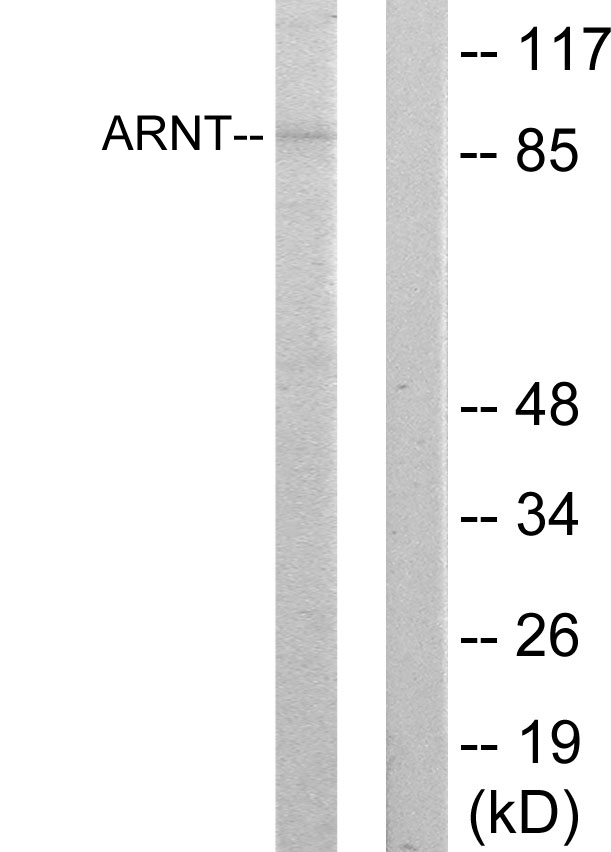Western Blot analysis of Mouse brain using HIF1 bata Monoclonal Antibody at dilution of 1:2000.
HIF1 bata Monoclonal Antibody
E-AB-22189
Product group Antibodies
Overview
- SupplierElabscience
- Product NameHIF1 bata Monoclonal Antibody
- Delivery Days Customer12
- CertificationResearch Use Only
- Scientific DescriptionHypoxia-inducible factor 1 (HIF1) is a heterodimeric transcription factor that plays a critical role in the cellular response to hypoxia (1). The HIF1 complex consists of two subunits, HIF-1alpha and HIF-1beta, which are basic helix-loop-helix proteins of the PAS (Per, ARNT, Sim) family (2). HIF1 regulates the transcription of a broad range of genes that facilitate responses to the hypoxic environment, including genes regulating angiogenesis, erythropoiesis, cell cycle, metabolism and apoptosis. The widely expressed HIF-1alpha is typically degraded rapidly in normoxic cells by the ubiquitin/proteasomal pathway. Under normoxic conditions, HIF-1alpha is proline hydroxylated leading to a conformational change that promotes binding to the von Hippel Lindau protein (VLH) E3 ligase complex; ubiquitination and proteasomal degradation follows (3,4). Both hypoxic conditions and chemical hydroxylase inhibitors (such as desferrioxamine and cobalt) inhibit HIF-1alpha degradation and lead to its stabilization. In addition, HIF-1alpha can be induced in an oxygen-independent manner by various cytokines through the PI3K-AKT-mTOR pathway (5-7).HIF-1beta is also known as AhR nuclear translocator (ARNT) due to its ability to partner with the aryl hydrocarbon receptor (AhR) to form a heterodimeric transcription factor complex (8). Together with AhR, HIF-1beta plays an important role in xenobiotics metabolism (8).
- UNSPSC12352203






